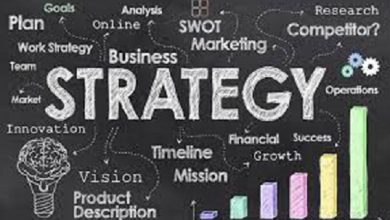Benchmarking in business its Types Purpose application and examples
Benchmarking
In this article we will provide you the information about Benchmarking in business its Types Purpose application and examples.
The term derives from the word benchmark (in Portuguese, reference ). Benchmarking represents a set of surveys carried out between organizations, in the same sector or not, with the human language. The objective of analyzing and optimizing results.
It also consists of observing the performance of products, logistical processes, services and marketing techniques in companies considered references in the market.
This market monitoring analyzes, interprets, evaluates and measures the information collected. All to develop market intelligence through data and understand how it benefits the organization.
In practice, each company identifies performance impact factors and defines metrics for KPIs, known as key performance indicators. The KPIs will be a benchmark to guide the teams.
Thus, the sector develops initiatives to improve the company’s position vis-à-vis the competition or increase market share.
In summary, the benchmarking strategy transforms ordinary organizations into authorities in their segment.
Types of Benchmarking in business
As a management strategy, benchmarking offers benefits to companies. But before you get to know them, you need to know about the different types and how they work.
1-Competitive
Competition serves as a parameter to understand how products or services position themselves in the market. In competitive benchmarking, the benchmark is the results of key competitors .
Among them, revenue and growth, represented by official numbers eventually released.
Today, competitive benchmarking is the study most used by companies, as it allows the improvement of basic production methods and characteristics. In this case, the human language. The objective is to project itself in front of the competition and gain space.
But this model must always follow ethical standards. In addition, it is common to have difficulty in performing competitive benchmarking , as companies keep their actions confidential.
Thus, to enter the competition, companies hire external consultants or use the “hidden customer“.
2-Generic
The research tries to understand how the same processes can occur in companies from different segments, that is, how organizations that do not even develop the same product behave.
Generic benchmarking is broader and is performed when there are similar processes, but that do not compete for the same market.
The technique compares competitive practices to identify points of improvement in the process itself . A classic example of generic benchmarking is the interested company’s e-commerce team shopping at other online stores.
Thus, it is possible to analyze the presentation of products on the website, how the purchase funnel works, payment practices and post-purchase. This benchmarking modality is one of the most adopted by companies today.
3-Functional
In order to carry out this type of benchmarking, the interested company studies a specific action carried out by other organizations, regardless of the area of operation.
In this case, it is analyzed how the competition delivers products or how it provides customer service, for example.
Here, the objective is to learn more refined strategies developed by well-listed companies in a specific area.
Remembering that benchmarking is not intended to copy processes , but to learn ways to develop it from successful cases demonstrated by other brands.
4-Internal
As the name suggests, this benchmarking model compares processes between internal practices, in different sectors, units or branches.
The reference point, in this case, is the company itself. The intention is to improve, through the analysis of actions that were born in the organization.
In general, productivity levels and other metrics are compared to identify potential bottlenecks. By observing sectors and processes that worked, people management is able to apply the same principles between teams .
Thus, attitudes, practices and methods that gave results are replicated in other areas or units.
As it is easy to apply, internal benchmarking helps to standardize processes in the organization and allows all units to act in a similar way.
5-Cooperation
The results here are similar to the answers collected in the competitive model. What sets them apart is how the analysis takes place.
In this model , two organizations come together to cooperate with each other in search of best practices . Companies, called benchmark partners, are not always competitors and may operate in different segments.
This partnership is beneficial for the exchange of experiences, and group work is highly valued. In general, the partnership signed is based on the creation of a system of indicators.
From there, both compare performances and share their practices. Furthermore, the processes are detailed and there is cooperation between them.
Purpose of Benchmarking in business
In benchmarking, comparison is seen as a matter of course to achieve organizational growth . Since they all want to learn from good examples .
Thus, this strategy leads the company along a path where constant improvement is sought.
By analyzing the competition or the processes themselves, organizations can gain valuable insights. However, benchmarking does not guarantee that everything other companies do is best for your business.
Importance and benefits of Benchmarking in business
Analyzing the competition also means evaluating what makes sense for my company and can be replicated in it. Using benchmarking correctly has great benefits. Follow up!
1-continuous improvement
What is learned from benchmarking should not be kept in the manager’s head. So transfer the insights into a document, update it regularly, and publicize it .
Thus, by being available to everyone in the company, learning shows what is essential for the continuous improvement of processes.
2-Knowledge
Understand benchmarking as a learning tool . After all, this practice requires research, analysis and observation to understand who our competitors are and what they do to achieve results.
It is a strategy that offers a holistic view of processes and the market . So use it to your organization’s advantage.
3-Regularity
The regular and updated research on competition or on the internal processes allows always be aware of possible failures. In addition, of course, to being able to predict sudden changes in the sector or discover new trends.
Benchmarking, when applied regularly, also allows you to discover obstacles that your competitors have already noticed and managed to overcome.
4-market understanding
As in the previous topic, applying benchmarking as a management strategy allows us to understand the global functioning of the market . Including, in its details and processes.
This makes it easier to put the organization on track by developing the best practices in the market.
5-Decrease in errors
Learning from the mistakes of others is the best lesson in benchmarking. By understanding what other companies have done, we can understand where they got it right and where they failed .
The best way to be successful in this strategy is to not repeat mistakes and adapt each idea to the reality of your organization.
6-Analysis
Listing good practices in a document, without analyzing their strategies in detail and understanding results, does not make sense.
Benchmarking will only be successful if it details the experiences of others and brings with it new lessons .
Therefore, consider that the conclusions obtained may suggest small or large changes. Maybe even signal the need to carry out a new strategic plan? Still, reviewing the company’s strategies and actions?
7-Cost reduction
A positive consequence of learning from mistakes is cost savings. By understanding what is not efficient in the company, we can eliminate steps or processes that generate expenses but do not bring results.
Disadvantages and Attention Points of Benchmarking in business
Now, understand what points we should pay attention to and what are the disadvantages of the strategy:
- just “copying” methods used by other companies, without adapting them to the reality of your organization, can be harmful , mainly due to the time and energy spent on implementing practices that do not make sense in your business;
- avoid focusing too much on the competition without analyzing the context of the company itself . This attitude can limit vision and impair self-knowledge. The result is a company that follows the others, without innovating in its own methods;
- replicating the techniques of others without understanding their need can lead to a drop in productivity and employee motivation . Therefore, it is essential to understand that what works in competition will not always be good for your company;
- be careful when copying everything the competition does. This attitude can mischaracterize your business, distorting its own identity and even affecting the organizational culture . In this sense, what could be a unique differential ends up being lost.
Benchmarking in business application examples
If the idea of benchmarking is to learn from good examples, let’s get to them. Below, we will show good practices developed by large companies that can be replicated, as long as they make sense for your business.
1-Xerox
The American Xerox Corporation operates in the information and documentation technology sector. Here, we are talking about one of the pioneers in benchmarking techniques.
The company started practicing it in the 1970s. In what way? Simple, Xerox bought equipment from competitors Nashua and Canon.
Then his technicians dismantled the machines and analyzed how Japanese companies were able to bring quality copiers to market at prices lower than those of Xerox.
The result of this strategy made the American brand a success in the sector, known worldwide as the inventor of the photocopier.
2-Coke
The company’s great idea was to use benchmarking to discover that its main competitor is not Pepsi, but tap water, and the explanation is simple.
The company focused its market analysis only on the soft drink segment, without considering its indirect competitors .
Until, at a certain point, the giant Coca-Cola realized that its biggest rivals were companies that produced coffee and fruit popsicles — products whose essential raw material is water.
Finding it was losing ground to these products, Coca-Cola understood that benchmarking shouldn’t just focus on the competition.
In fact, you need to be aware of indirect rivals that might eventually take your space.
3-Air Lines Goal
Gol’s greatest asset was working on international benchmarking. Thus, the Brazilian company, founded in 2001, brought to the country the management model that offers tickets at a lower cost than the competition ( low cost ).
To arrive at this strategy, Gol observed the practice used by the Irish Ryanair and the British EasyJet . Both already used the low cost with good results.
Observing foreign companies, Gol realized that it was possible to reduce the value of tickets with the withdrawal of free food, for example.




